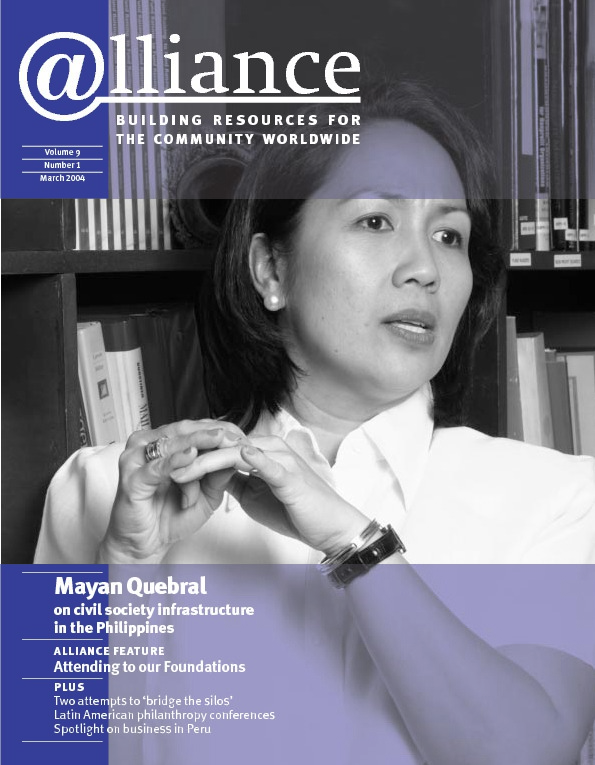It was 1998 and, with the approaching millennium, hard to resist speculating about the future. The dot com bubble was far from bursting and there had as yet been no acts of terrorism on American soil. It was an optimistic, expansive time. The worry of the day was Y2K: would all our computers automatically shut down at midnight on 1 January 2000, unleashing havoc and accidentally deploying nuclear missiles from everywhere to everywhere else?
In retrospect our worries seem trivial and foolish, especially in light of what the future actually delivered. But at that time, possibilities begat more and more possibilities – even in the face of unbounded human need and environmental degradation on a global scale. Most days, we had the feeling that we were in more or less good control of our destinies – if only we could get enough computer programmers to work on the Y2K bug.
As director of the newly merged Organizational Effectiveness and Philanthropy Program at the David and Lucile Packard Foundation, I often mused about the myriad challenges ahead. Could the approaching millennium serve to focus discussion beyond the tactical issue of Y2K and on the role of philanthropy and the non-profit sector?
My valued colleagues at the time included fellow grantmakers from the Mott and Kellogg Foundations – Elan Garonzik and Tom Reis. The three of us began tossing around ideas about what we could do to spur discussion among our colleagues and grantees about the long-term future and how to plan for it.
Not surprisingly, since we took off without a map, we got a little lost. We started with trend analysis. Then we considered a business plan competition that would encourage sector leaders to think 20 years ahead. We abandoned both approaches: trend analysis made the future look too predictable and a competition would reach only a small number of non-profit sector leaders and it was – well – competitive. Elan moved on to a more focused look at the future of community foundations to great effect, and Tom and I promised each other that we would give up thinking so much about the future if the next attempt wasn’t right – before we actually lost our jobs for tilting at windmills. With this less than cheerful mien, we soldiered on.
Serendipity led us to Katherine Fulton and the Global Business Network (GBN). We very quickly knew that we had found our guru and our guide. The rest is history – and the future. In what amounted to a five-year pursuit, Katherine, Tom and I were joined along the way by literally thousands of others in pursuit of a better understanding of the forces at work in our world and our appropriate responses to an essentially uncertain future.
As you will see from the articles in this issue of Alliance magazine, and from the GBN monograph Looking Out For The Future, the journey so far has uncovered complexity as well as opportunity. There are many choices to be made – individual choices for philanthropists that will shape our collective future in important ways. And of course the journey for many of us is just beginning. For now, I’ll close with two thoughts: (1) Don’t underestimate the power of colleagueship in traversing uncharted territory and (2) in the words of futurist and GBN founder, Peter Schwartz, ‘Our job is to leave the future better than we found it.’
Barbara Kibbe is Vice President, Program and Effectiveness, at the Skoll Foundation. She can be contacted at bkibbe@skollfoundation.org





Comments (0)